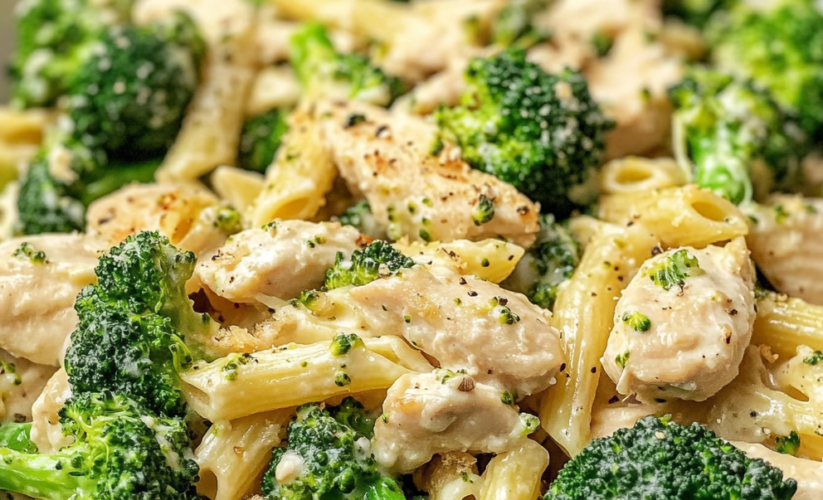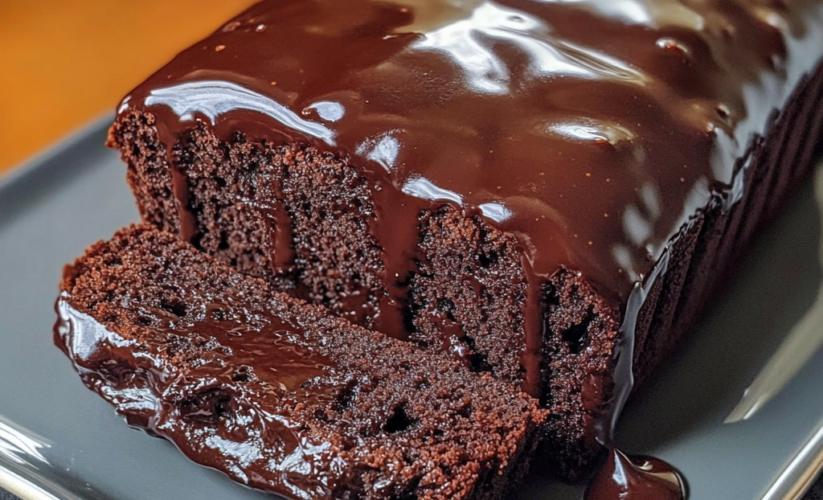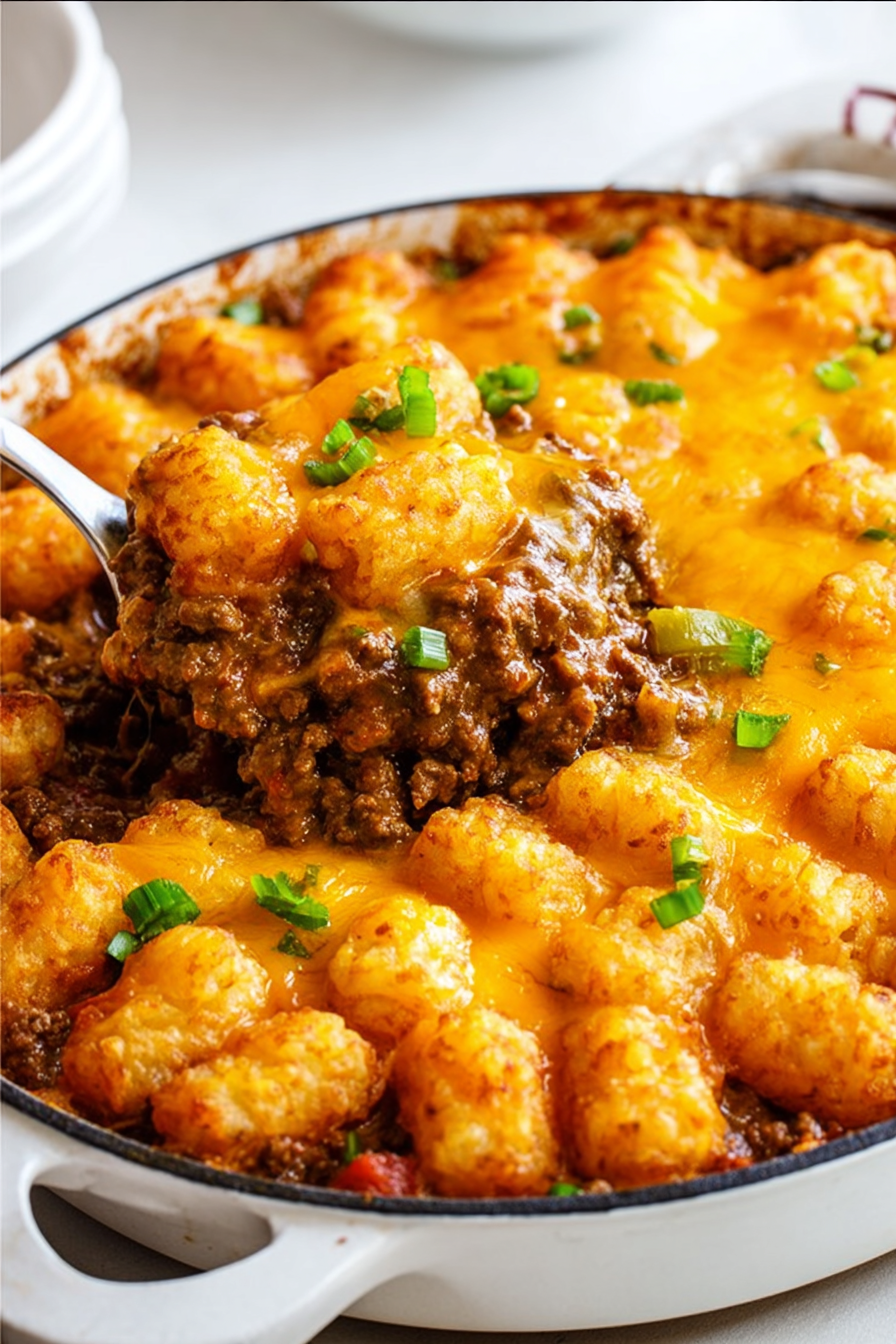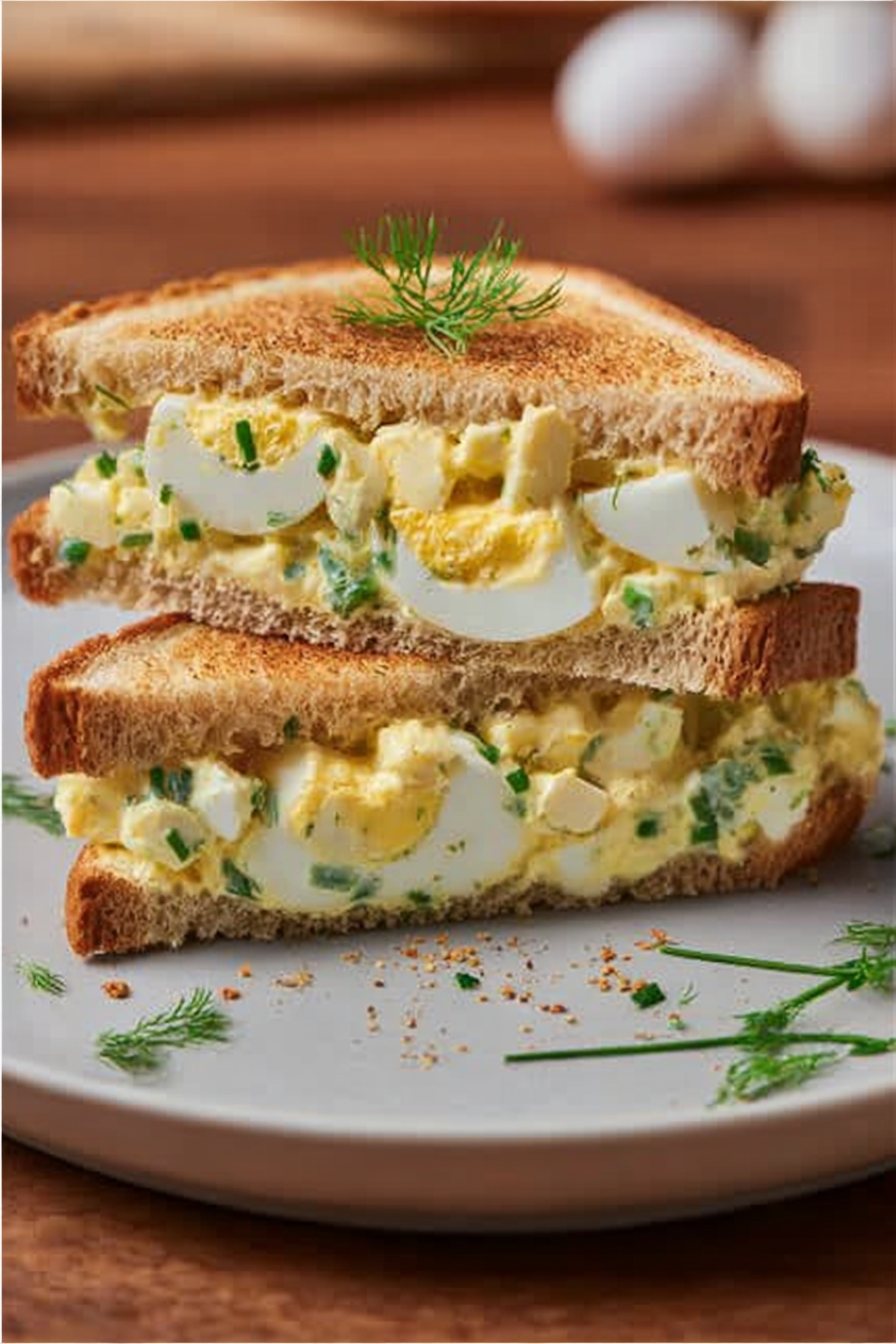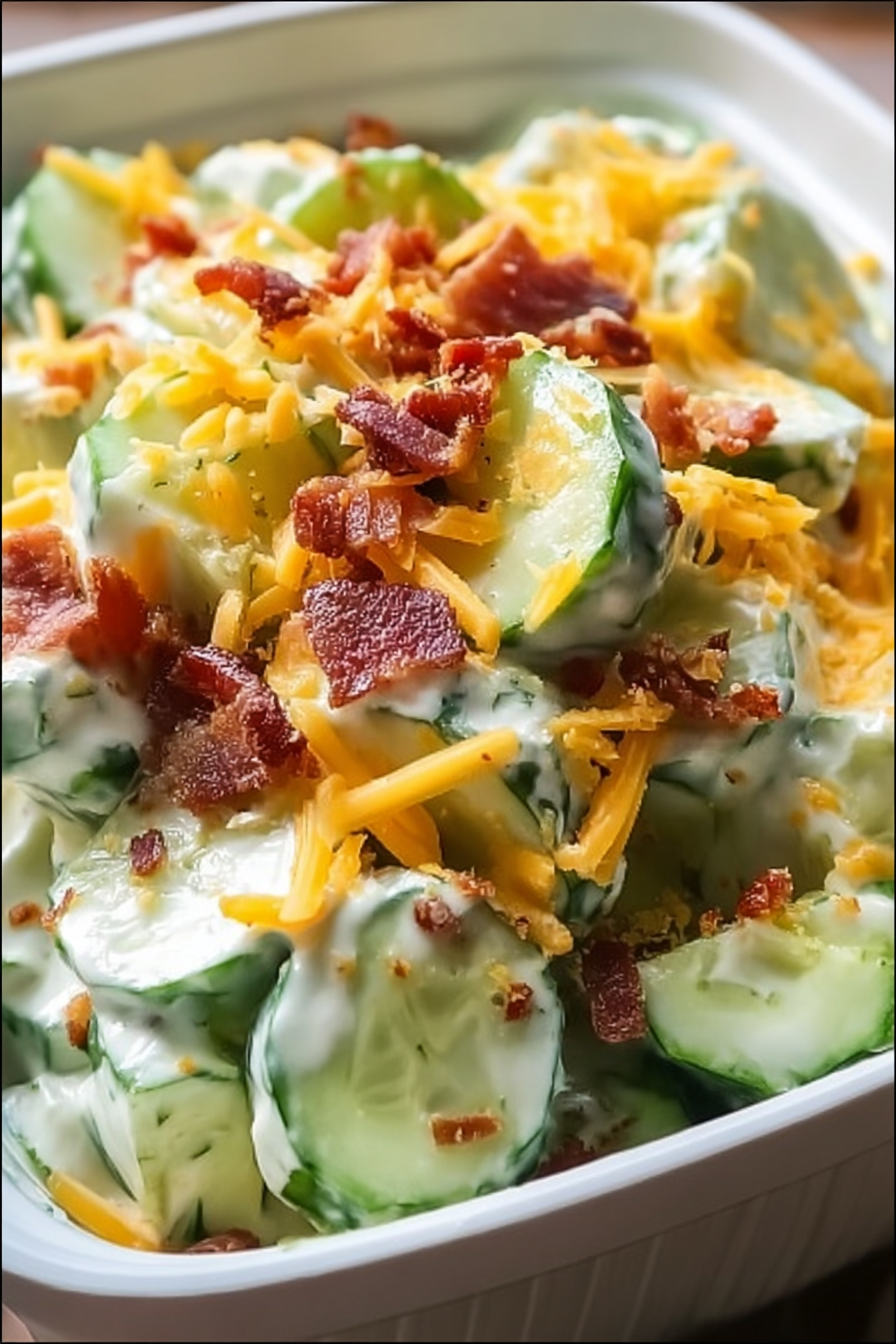
Homemade Cowboy Salad
This is the salad that laughs at the notion of rabbit food—a hearty, ranch-inspired creation loaded with crispy bacon, seasoned beef, beans, cheese, and enough substance to satisfy the heartiest appetite. It’s what happens when Tex-Mex meets ranch cooking, creating a meal-sized salad that’s become legendary at potlucks, barbecues, and anywhere hungry folks gather. Every forkful delivers crunch, protein, and that addictive combination of flavors that’ll have even devoted carnivores asking for the recipe.
Ingredients
For the Seasoned Beef:
- 1 pound ground beef (85/15 blend)
- 1 tablespoon olive oil
- 1 packet taco seasoning (or homemade blend)
- ½ cup water
- Salt and pepper to taste
For the Salad Base:
- 2 heads romaine lettuce, chopped
- 2 cups iceberg lettuce, shredded
- 1 can (15 oz) black beans, drained and rinsed
- 1 can (15 oz) pinto beans, drained and rinsed
- 2 cups cherry tomatoes, halved
- 1½ cups corn (fresh, frozen, or canned)
- 1 red bell pepper, diced
- 1 green bell pepper, diced
- 1 red onion, diced
- 2 avocados, diced
- 8 slices bacon, cooked crispy and crumbled
- 2 cups sharp cheddar cheese, shredded
- 1 cup Monterey Jack cheese, shredded
For the Ranch Dressing:
- 1 cup mayonnaise
- ½ cup sour cream
- ¼ cup buttermilk
- 2 tablespoons fresh lime juice
- 1 packet ranch dressing mix
- 1 teaspoon chipotle powder
- 2 cloves garlic, minced
- 2 tablespoons fresh cilantro, chopped
- Salt and pepper to taste
For Toppings and Garnish:
- 2 cups tortilla chips, lightly crushed
- 1 cup Fritos corn chips
- ½ cup pickled jalapeños
- ¼ cup green onions, sliced
- Fresh cilantro
- Lime wedges
Instructions
- Cook the Beef: Heat olive oil in large skillet over medium-high heat. Add ground beef, breaking apart with wooden spoon. Cook 6-8 minutes until browned and no pink remains. Drain excess fat, keeping about 1 tablespoon in pan.
- Season the Meat: Return beef to heat, add taco seasoning and water. Simmer 5 minutes until liquid reduces and meat is well-coated. Set aside to cool slightly—hot meat wilts lettuce.
- Prepare the Bacon: While beef cooks, fry bacon until crispy. Drain on paper towels, then crumble into bite-sized pieces. Save 2 tablespoons bacon fat for corn if using fresh.
- Char the Corn: If using fresh corn, cut kernels from cob. Heat saved bacon fat in skillet, add corn and cook 5 minutes until slightly charred. Season with salt and pepper. Frozen corn can be charred the same way; canned corn should be drained and used as-is.
- Make Ranch Dressing: In bowl, whisk mayonnaise, sour cream, and buttermilk until smooth. Add lime juice, ranch mix, chipotle powder, garlic, and cilantro. Whisk until combined. Taste and adjust—more lime for tang, chipotle for heat.
- Prep Fresh Ingredients: While components cool, chop lettuces, dice peppers and onion, halve tomatoes. Keep avocados whole until just before serving to prevent browning.
- Layer the Base: In large serving bowl or platter, combine romaine and iceberg lettuces. This creates textural variety—romaine for crunch, iceberg for crisp water content.
- Build the Salad: Top lettuce with black beans, pinto beans, tomatoes, corn, bell peppers, and red onion. Add cooled beef and bacon. The order doesn’t matter much, but distributing evenly ensures balanced bites.
- Add Cheese and Avocado: Sprinkle both cheeses over salad. Dice avocados at last minute and gently distribute to prevent mashing. Their creaminess balances all the crunchy elements.
- Dress and Toss: Drizzle with half the ranch dressing and gently toss to coat. Reserve remaining dressing for individual preferences—some like it swimming, others prefer lighter coating.
- Final Garnish: Just before serving, top with crushed tortilla chips and Fritos for crunch. Add jalapeños, green onions, and cilantro. Serve with lime wedges for squeezing.
Recipe Notes
- Prep Time: 30 minutes
- Cook Time: 20 minutes
- Total Time: 50 minutes
- Servings: 8-10 as main dish, 12-15 as side
- Calories: 520 per main dish serving
The Evolution of Cowboy Salad
Cowboy salad represents the evolution of American ranch cooking—born from the need to feed hungry workers with shelf-stable ingredients that could withstand heat and travel. The original versions relied heavily on canned goods and preserved meats, creating hearty one-dish meals that provided serious fuel for hard labor.
Modern interpretations elevate these humble beginnings with fresh ingredients while maintaining the spirit of abundance and bold flavors. The combination of beans, meat, and vegetables creates complete protein, making this truly a salad that eats like a meal. It’s camp cooking refined for contemporary tables.
The genius lies in the textural variety—every bite offers something different. Crisp lettuce, creamy beans, juicy tomatoes, crunchy chips, and rich cheese create a symphony of contrasts that keeps palates engaged. This isn’t a salad you pick at; it’s one you attack with enthusiasm.
Meat Matters: Building Flavor
Ground beef provides the heartiness that defines cowboy salad, but the preparation elevates it beyond basic taco meat. Using 85/15 blend balances flavor and moisture—leaner dries out, fattier makes the salad greasy. That retained tablespoon of fat carries the seasoning and prevents dry, pebbly meat.
The taco seasoning isn’t just about heat—it’s a complex blend of cumin, chili powder, paprika, oregano, and garlic that creates Tex-Mex flavor profile. Making your own (2 tablespoons chili powder, 1 tablespoon cumin, 2 teaspoons paprika, 1 teaspoon each oregano, garlic powder, onion powder, ½ teaspoon cayenne) allows customization and avoids additives.
Cooling the meat before adding prevents wilted lettuce and allows flavors to settle. Hot meat would also melt the cheese prematurely, creating clumps rather than even distribution. Room temperature components combine better and maintain distinct textures.
The Bean Debate
Using both black and pinto beans isn’t redundancy—it’s strategic. Black beans provide earthy depth and striking color contrast. Pintos offer creaminess and mild flavor that absorbs surrounding seasonings. Together they create more complex flavor and visual appeal than either alone.
Rinsing canned beans removes excess sodium and the starchy liquid that can make salads gummy. Pat them dry with paper towels for even better results. This extra step prevents diluting the dressing and maintains proper consistency.
Some cowboys add ranch-style beans for extra flavor, but the additional sauce can make the salad soupy. If using, drain thoroughly and reduce dressing accordingly. The beans should enhance, not dominate, the overall composition.
Lettuce Logic
The romaine-iceberg combination serves specific purposes. Romaine provides nutritional value and sturdy structure that holds up to heavy toppings. Iceberg adds refreshing crunch and neutral flavor that doesn’t compete with bold ingredients. Together they create the perfect salad foundation.
Chopping size matters more than you’d think. Too large and it’s unwieldy; too small and it gets lost among chunky toppings. Aim for bite-sized pieces that fit on a fork with other ingredients. Uniform sizing ensures even dressing distribution.
Drying lettuce thoroughly prevents diluted dressing. Use a salad spinner or pat with paper towels. Wet lettuce is the enemy of crisp salads and causes dressing to slide off rather than adhere. This step takes moments but dramatically improves results.
Ranch Dressing Revolution
Traditional ranch gets a Southwestern makeover that transforms it from simple condiment to flavor powerhouse. The mayonnaise-sour cream base provides richness, while buttermilk adds tang and helps achieve pourable consistency. These proportions create dressing that coats without overwhelming.
Chipotle powder is the secret weapon—adding smoky heat that complements the beef and beans. Start conservatively and adjust; heat builds as it sits. Fresh lime juice brightens the heavy base while echoing Tex-Mex flavors. The acid also helps cut through all the rich components.
Making dressing ahead allows flavors to meld—overnight is ideal. The garlic mellows, herbs infuse, and consistency thickens slightly. If too thick after chilling, thin with buttermilk. This dressing keeps for a week and works on everything from vegetables to wings.
Corn Considerations
The corn preparation method dramatically impacts final flavor. Fresh corn, charred in bacon fat, provides sweetness, smoke, and textural variety with its slight caramelization. This extra step transforms simple vegetable into flavor-packed component worthy of the “cowboy” name.
Frozen corn works nearly as well when properly charred. The key is high heat and patience—don’t stir constantly or it steams rather than chars. Those blackened spots equal concentrated flavor. Even canned corn improves with quick sautéing to remove tinny taste.
Some add Mexican street corn (elote) preparation—mixing charred corn with mayo, cotija cheese, chili powder, and lime. While delicious, this can make the salad too rich. Save this treatment for smaller portions or serve elote-style corn as side dish.
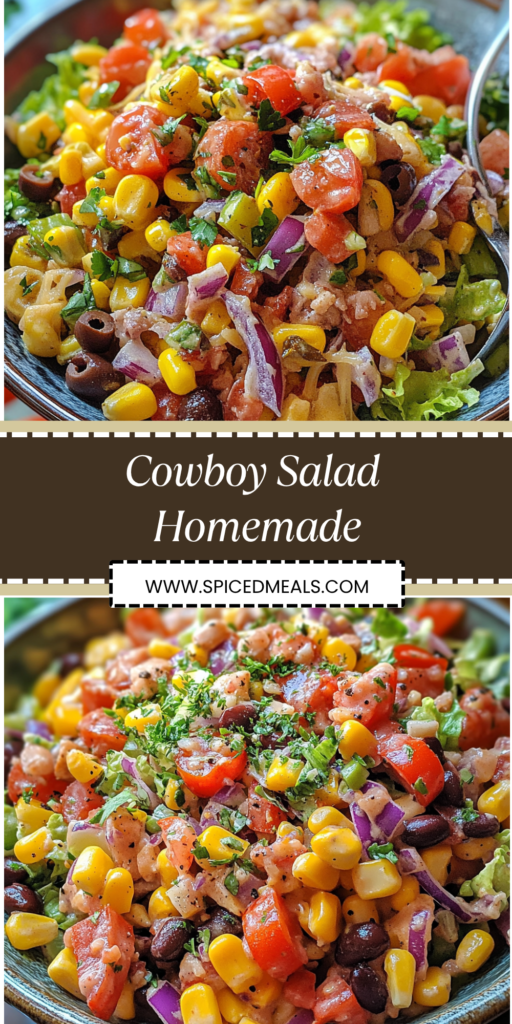
Cheese Strategy
The two-cheese approach provides complexity. Sharp cheddar brings bold flavor and classic color, while Monterey Jack adds mild creaminess. Pre-shredded works but lacks the meltability and flavor of freshly grated. The anti-caking agents in pre-shredded can create grainy texture.
Cheese temperature affects distribution. Cold cheese straight from refrigerator stays in distinct shreds. Room temperature cheese melds slightly with warm components, creating pockets of creaminess. Neither is wrong—it’s preference for distinct versus integrated cheese presence.
Some versions use Mexican cheese blend or add cotija for authenticity. Pepper jack substitutes for heat lovers. Queso fresco provides lighter option that doesn’t overpower. The key is balancing rich ingredients so no single component dominates.
The Chip Controversy
Adding chips directly to salad sparks debate—won’t they get soggy? The key is timing and type. Sturdy tortilla chips and Fritos maintain crunch longer than delicate chips. Adding just before serving preserves texture. The slight softening that occurs actually helps them meld with other ingredients.
For make-ahead situations, serve chips alongside for individual adding. This accommodates texture preferences and prevents sogginess. Some people love slightly softened chips that absorb dressing; others demand maximum crunch. Providing options satisfies everyone.
The combination of tortilla chips and Fritos isn’t redundancy—they provide different corn flavors and textures. Tortilla chips add neutral crunch, while Fritos contribute distinctive corn taste and sturdier texture. Together they create more interest than either alone.
Assembly Architecture
Strategic assembly prevents ingredient settling and ensures balanced distribution. Start with lettuce base, then add ingredients in size order—larger items first, smaller ones nestle between. This creates even distribution rather than distinct layers that separate when served.
The tossing technique matters. Gentle folding with large spoons or hands preserves integrity of delicate ingredients. Vigorous mixing breaks chips, mashes avocados, and creates unappetizing mush. Think folding rather than stirring.
Individual versus communal serving depends on occasion. Family-style in large bowl encourages sharing and seconds. Individual composed salads allow customization and elegant presentation. Either way, assemble just before serving for optimal freshness.
Make-Ahead Magic
Nearly every component can be prepped ahead. Cook and season meat up to 2 days early. Prepare dressing up to week ahead. Chop hardy vegetables morning of serving. Cook bacon and grate cheese day before. This distribution makes assembly quick.
Store components separately to maintain textures. Wet ingredients (tomatoes, dressed beans) in one container, dry in another. Lettuce stays crispest in spinner or wrapped in paper towels. Avocados must wait until serving time.
For potlucks, transport components separately and assemble on-site. Pack dressing in squeeze bottle for easy application. Bring extra chips and toppings—this salad inspires seconds and thirds. Label spicy components for heat-sensitive eaters.
Variations and Adaptations
Chicken Version: Substitute grilled, seasoned chicken breast cut into strips. Lighter but equally satisfying. Rotisserie chicken works for convenience.
Vegetarian Option: Omit meat, double beans, add seasoned black-eyed peas or chickpeas. Grilled halloumi or crispy tofu provides protein and texture.
Seafood Twist: Replace beef with seasoned shrimp or fish. Lighter version perfect for summer. Add mango for tropical flair.
Breakfast Bowl: Top with fried eggs, add crispy hash browns instead of chips. Breakfast sausage replaces ground beef. Genius hangover cure.
Low-Carb: Skip beans and corn, double meat and cheese, use pork rinds instead of chips. Add more avocado for satisfaction.
Scaling for Crowds
This recipe multiplies beautifully for large gatherings. Use aluminum pans for easy transport and cleanup. Calculate 1½ cups per person as main dish, ¾ cup as side. Always make extra dressing—people will want it for everything.
For 50 people, quintuple recipe but taste as you go. Seasoning doesn’t always scale linearly. Prep components in batches to maintain quality. Recruit help for chopping—many hands make light work.
Consider taco bar setup for large crowds. Arrange components separately, let people build their own. Provides options for dietary restrictions and preferences. Label everything clearly, especially spicy items.
Cultural Impact
Cowboy salad represents American fusion at its finest—Mexican ingredients meet ranch sensibilities in crowd-pleasing format. It’s become a potluck staple across the Southwest and beyond, with regional variations reflecting local preferences.
The name itself evokes rugged individualism and hearty appetites, making it acceptable for men who might otherwise avoid “salad.” It’s genius marketing that’s helped mainstream the concept of substantial salads as complete meals.
This salad bridges generations and dietary divides. Kids love the chips and cheese, adults appreciate the vegetables, and everyone enjoys the bold flavors. It’s democratic dining that brings people together over shared appreciation for good, honest food.
Final Thoughts
This Homemade Cowboy Salad proves that salads can be every bit as satisfying as any traditional meal. It’s a testament to American ingenuity—taking diverse influences and creating something uniquely ours. Whether feeding a crowd at a summer barbecue or making a weeknight dinner special, this salad delivers on every level. The combination of fresh vegetables, hearty proteins, creamy beans, crunchy chips, and that addictive ranch dressing creates a meal that’s greater than the sum of its parts. Master this recipe and you’ll have a guaranteed crowd-pleaser that scales from family dinner to feeding an army, proving that sometimes the best dishes are the ones that break all the rules.
